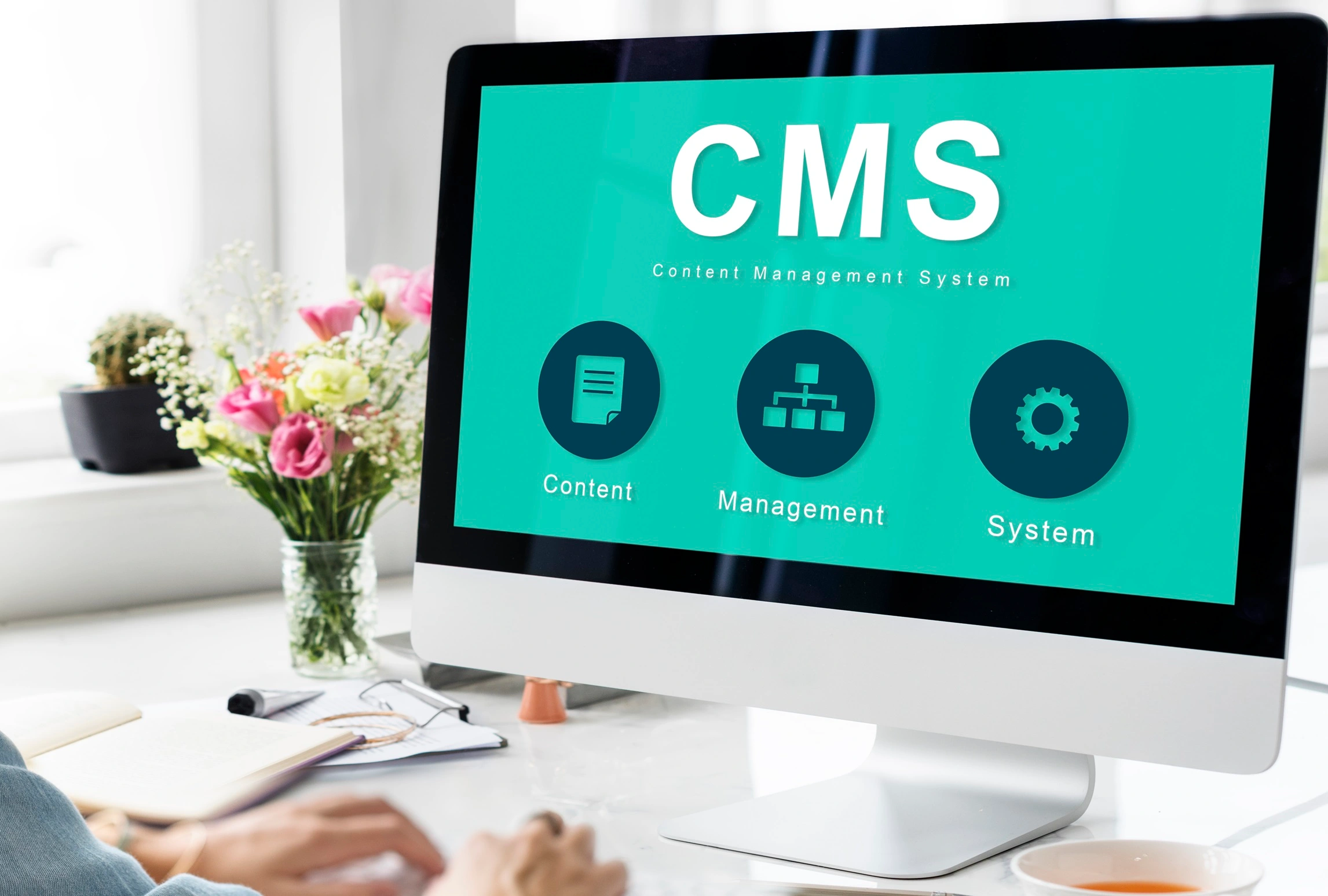How IBM i Modernization Can Help Drive Digital Transformation
How IBM i Modernization Can Help Drive Digital Transformation
IBM's Power Systems platform, previously AS/400, is used by over 100,000 companies worldwide for critical business applications. It offers scalability, reliability, security, and an integrated database, attracting a dedicated global user community. These applications are crucial for organizations as they contain important business rules and data. Modernizing them is a cost-effective and low-risk way to incorporate modern technologies and support business growth in the digital age. By intelligently planning a digital transformation, organizations can update their IT infrastructure and systems, and we will explore how modernizing IBM i applications can help drive digital transformation
What is IBM i Modernization?
IBM i application modernization involves updating and improving old applications on IBM i systems to work better with modern computing. These applications are usually outdated and run on old hardware and software. Modernizing them means making them more flexible, scalable, and compatible with current technology like cloud computing and microservices architecture.
Benefits of IBM i Modernization
Improved Agility
Modernizing IBM i apps by adopting a microservices architecture improves agility. Breaking down the applications into smaller components allows for faster and more flexible development. Developers can make changes and add features without impacting the entire system, enabling quicker responses to business requirements. Continuous integration and deployment are also facilitated, leading to faster and more frequent updates to the application.
Scalability
Monolithic applications are challenging and expensive to scale, often requiring the entire application to be scaled up, even if only one component is facing high load or performance issues. Modernizing IBM i apps by breaking them down into smaller, independent components makes it easier to scale individual components as needed. This approach ensures that resources are allocated efficiently, preventing waste and reducing overall costs.
Cost-Effectiveness
Legacy applications can be costly to maintain due to the need for specialized hardware and software, as well as the complexity of the system. Modernizing IBM i apps by moving them to cloud-based environments and adopting microservices architecture reduces hardware and software costs, and makes the application easier to manage and maintain. This approach also reduces technical debt, enabling organizations to allocate resources to more strategic initiatives.
Security
Legacy applications may have security vulnerabilities due to outdated technology and lack of updates. Modernizing the applications to a more secure architecture can help protect against cyber threats and ensure compliance with regulations.
UX and productivity
Modernized IBM i apps can improve user experience and productivity. By updating the user interface and making applications more accessible, users can navigate and use the applications more easily, leading to increased productivity and efficiency.
Best Strategies for IBM i Modernization
Application modernization
One strategy for IBM i app modernization is to move from a monolithic architecture to a microservices architecture. In a microservices architecture, components of the application are decoupled, allowing for more flexibility in deployment and scalability. This approach can make applications easier to update, scale, and maintain over time. However, modernizing IBM i apps can be time-consuming and expensive, and requires significant effort and resources.
Cloud migration
Cloud migration is another strategy for modernizing IBM i applications. This approach involves moving applications from on-premises servers to cloud-based servers, providing organizations with greater flexibility, scalability, and cost savings. Cloud migration can also help to reduce the need for hardware and software maintenance while providing access to new features and capabilities. However, migrating to the cloud can introduce new security risks, and requires careful planning and management to ensure a successful migration.
Integration with other systems
This is another strategy for IBM i modernization. This approach involves connecting IBM i applications with other systems, such as CRM or ERP systems, through APIs and other integration tools. This can help to improve data sharing and streamline business processes, enabling organizations to operate more efficiently and effectively. Integration with other systems can also help to increase agility and innovation, as organizations can take advantage of new technologies and innovations. However, integrating with other systems can also introduce complexity and require ongoing management and maintenance.
IBM i modernization can take many different forms, each with its own pros and cons. It is important to carefully evaluate each approach and determine the best strategy for each organization's specific needs and goals.
Challenges & Solutions During Modernizing
IT Strategy & Planning
IT strategy and planning can be a major challenge during IBM i app modernization, particularly as organizations aim to balance short-term objectives with long-term goals. One of the key issues faced by organizations is the need to manage complexity, particularly when modernizing large legacy applications. This can be particularly challenging in the context of IBM i apps, which often feature monolithic architectures that are difficult to update and scale. In order to address this challenge, organizations need to develop a clear modernization strategy that prioritizes key objectives, such as scalability, agility, and cost-effectiveness. Ultimately, the key to successful IT strategy and planning during IBM i app modernization is to take a holistic, long-term approach that balances short-term objectives with long-term goals. This requires a clear understanding of business requirements and IT capabilities, as well as a willingness to embrace new technologies and approaches. By focusing on incremental modernization, cloud-first strategies, and integration with other systems and platforms, organizations can achieve the scalability, agility, and cost-effectiveness they need to succeed in the digital age.
GUI, web, and mobile platforms
Modernizing IBM i apps for GUI, web, and mobile platforms can present several challenges, such as:
- Need to redesign the user interface to provide an intuitive and easy-to-use experience for end-users. This often requires a complete overhaul of the underlying architecture and application code. In addition, web modernization also requires addressing security concerns to protect data transmitted over the internet.
- Mobile modernization: This presents its own set of challenges. Mobile platforms have unique user interface requirements and different technical specifications that must be taken into account during the modernization process. This can require significant changes to the existing application code, which can be time-consuming and costly.
To address these challenges, organizations can adopt various modernization solutions, such as:
- Green screen modernization It is a cost-effective approach that enables organizations to modernize their IBM i apps by transforming the green screen interface into a modern, intuitive user interface. This approach preserves the existing application logic and underlying data, minimizing the risk of business disruption. The resulting modernized app can then be easily integrated with web and mobile platforms.
- Web and mobile app development: These involve redesigning the application interface and developing new code to support the new platform. This approach can be time-consuming and costly but enables organizations to take full advantage of the capabilities of web and mobile platforms. To mitigate the cost, organizations can adopt an iterative approach, developing and testing new features in small increments to minimize the risk of failure.
- SOA/web services: These services allow organizations to modernize their IBM i apps by breaking them down into smaller, more manageable components. This approach enables organizations to integrate their IBM i apps with other systems and web services, making them more scalable and easier to maintain. SOA also provides a more flexible architecture that can be easily adapted to meet changing business requirements.
Staffing and application services: Such kinds of challenges can be addressed by the corresponding solutions as follows:
- Skillset gaps IBM i app modernization often requires new and old technologies and programming languages, which may not be part of the existing IT team's skillset. This can lead to skillset gaps, which can slow down the modernization process. Training and reskilling the existing IT team can help them acquire the skills needed for IBM i app modernization. Alternatively, organizations can hire external experts who have the required skills and experience.
- Limited resources: Modernizing IBM i apps can be resource-intensive, requiring significant time, effort, and budget. This can create challenges for organizations that have limited resources. Prioritizing modernization efforts based on business needs and benefits can help organizations allocate resources more effectively. Adopting agile methodologies can also help organizations break down the modernization process into smaller, more manageable chunks.
- Maintaining legacy systems: During IBM i app modernization, organizations need to maintain and support existing legacy systems while also developing and deploying new solutions. This can be a challenge, as resources may be stretched thin. Adopting a phased approach to modernization can help organizations maintain legacy systems while gradually introducing new solutions. This can help reduce the strain on resources and ensure a smooth transition to modernized systems.
- App services integration: Modernized IBM i apps often need to integrate with other systems and services, which can create technical challenges. Using SOA/web services architecture can help organizations integrate IBM i apps with other systems and services more easily. This can provide a standardized way to communicate between systems and services, making integration more efficient and reliable.
Examples of Successful IBM i Modernization
- Seiko Instruments Seiko Instruments, a manufacturer of thermal printers and electronic components, embarked on an IBM i modernization project to enhance their warehouse management system. They chose to modernize their existing green-screen interface with a more user-friendly web-based interface that can be accessed from desktops, tablets, and mobile devices. They also integrated their warehouse management system with their sales order processing system, which improved their order fulfillment process. The modernization project resulted in improved productivity and faster order fulfillment and also enabled Seiko to meet the evolving needs of its customers.
- Varsity Brands: Varsity Brands, a leading manufacturer and supplier of cheerleading and dance team apparel embarked on an IBM i modernization project to consolidate their multiple legacy systems into a single, modern system. They chose to modernize their applications using a microservices architecture, which involved breaking down their monolithic applications into smaller, more manageable components. They also modernized their user interface to a web-based interface that can be accessed from any device. The modernization project resulted in improved efficiency, reduced costs, and improved customer experience.
- BlueCross BlueShield: BlueCross BlueShield of South Carolina, a health insurance provider, embarked on an IBM i modernization project to improve their claims processing system. They chose to modernize their existing green-screen interface with a more modern, user-friendly interface that could be accessed from any device. They also integrated their claims processing system with external partners using web services. The modernization project resulted in improved accuracy and efficiency in claims processing, reduced processing times, and improved customer satisfaction.
Final Thoughts
Whether through app modernization, cloud migration, or integration with other systems, modernizing IBM i applications can help organizations stay competitive in today's digital landscape by improving agility, scalability, security, and cost-effectiveness. It is therefore imperative that organizations choose the right experts to carefully craft and execute successful IBM i modernization roadmaps to drive their digital transformation. Our specialists at Vofox are just the right people for the job. With multiple years of experience in modernizing IBM i applications, we have what it takes to seamlessly futureproof your organization and make it more relevant in today’s digital arena. Contact us today and get started.



